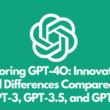Are you preparing for an interview for a product manager position? As a product manager, you will be responsible for overseeing a product’s development, launch, and success.
To assess your qualifications and suitability for the role, interviewers may ask you a series of questions related to product management.
In this article, we’ll explore some of the most commonly asked interview questions for product manager positions and provide examples of strong answers.
By familiarizing yourself with these questions and preparing thoughtful responses, you can increase your chances of acing the interview and landing your dream job.
So, let’s dive in and start preparing for your next interview!

10 Best Product Manager Interview Questions and Answers
1. Can you walk me through your product management experience?
When answering this question, you want to give an overview of your product management experience, including your roles and responsibilities. You can discuss the products you’ve managed, the stages of the product lifecycle you’ve overseen, and any notable achievements or challenges you’ve faced.
Example: “For the past five years, I’ve worked as a product manager, managing a wide range of products from various industries. I’ve overseen everything from ideation to launch and worked with cross-functional teams to deliver successful products. One of my proudest achievements was launching a mobile app that increased user engagement by 50% within the first month of launch.”
2. How do you prioritize features for a product roadmap?
Prioritization is a crucial skill for product managers, and interviewers will be looking for a structured approach to this question. You can discuss techniques like user research, data analysis, and stakeholder input, as well as how you weigh different factors like business goals, user needs, and technical feasibility. Be sure to emphasize the importance of a clear product vision in guiding feature prioritization.
Example: “When prioritizing features, I identify user needs and pain points through user research and feedback. Then, I consider business goals, technical feasibility, and any input from stakeholders. I use tools like a value/effort matrix to weigh these factors and ensure we’re working on the features that will most impact our users and business. Ultimately, it’s important to have a clear product vision that guides feature prioritization and keeps the team aligned.”
3. How do you conduct user research?
User research is an important part of product development, and you’ll want to demonstrate your understanding of research methods as well as your ability to translate research findings into actionable product decisions. Emphasize here the importance of involving users throughout the product development process.
Example: “User research is a key component of product development, and I use various techniques like surveys, interviews, and usability testing to understand user needs and pain points. I analyze and synthesize research findings to identify patterns and insights that guide product decisions. It’s important to involve users throughout the product development and use research insights to inform feature prioritization, design decisions, and user testing.”
4. Can you tell me about a time when you had to make a difficult decision as a product manager?
This behavioural interview question is designed to assess your decision-making skills and ability to handle difficult situations. You can discuss when you had to weigh competing priorities or make a trade-off between different options and how you decided. Emphasize your ability to communicate your decision and its rationale to stakeholders.
Example: “I once had to make a tough decision about delaying a product launch to address a critical bug or to launch on schedule and address the bug in a future release. I weighed the impact on users and the business and the technical feasibility of each option. I ultimately decided to delay the launch to ensure a better user experience. I communicated the decision and its rationale to stakeholders and worked with the team to address the bug as quickly as possible.”
5. How do you work with cross-functional teams?
Working with cross-functional teams is essential to product management, and you’ll want to demonstrate your ability to collaborate effectively across departments. You can discuss techniques like establishing clear communication channels, facilitating regular team meetings, and using project management tools to keep everyone aligned. Emphasize your ability to build relationships and understand the needs and perspectives of different team members.
Example: “As a product manager, I understand the importance of collaboration across departments. I establish clear communication channels and facilitate regular team meetings to ensure everyone is aligned. I also use project management tools to track progress and ensure everyone works towards the same goals. Building relationships with engineering and design teams is key, and I understand their needs and perspectives to foster a collaborative culture that results in successful products.”
6. What is your process for launching a new product?
When answering this question, you’ll want to describe a clear and structured process for launching a new product. You can discuss the critical stages involved, such as market research, product development, testing, and launch planning. Be sure to highlight the importance of collaboration across teams, including design, engineering, and marketing.
Example: “My process for launching a new product involves a few key stages. First, I work closely with the market research team to identify user needs and assess the competition. Then, I collaborate with the design and engineering teams to develop a prototype and conduct user testing to ensure the product meets user needs. Once we have a solid product, I work with the marketing team to develop a launch plan that includes messaging, promotion, and outreach. I prioritize communication and collaboration across teams throughout the process to ensure we’re all aligned on the product vision and goals. For example, in my previous role, we launched a new SaaS product that received positive user feedback and exceeded revenue targets within the first quarter of launch.”
7. How do you stay informed about industry trends and changes?
To answer this question, emphasize your curiosity and passion for staying up-to-date on industry trends and news. Discuss the sources you use to stay informed, such as industry publications, social media, conferences, and networking with peers. You can also mention any techniques you use to filter and prioritize information and how you incorporate industry insights into your product strategy.
Example: “I’m passionate about staying informed about industry trends and news, and I use a variety of sources to stay up-to-date. I regularly read industry publications, follow thought leaders on social media, attend conferences, and network with peers in the industry. To filter and prioritize information, I use tools like RSS feeds and newsletters and my own judgment about what’s most relevant to my products and customers. I incorporate industry insights into my product strategy by staying flexible and open to new ideas and constantly assessing how emerging trends might affect my products.”
8. What are the essential qualities of a successful product manager?
A successful product manager should possess a range of skills and qualities, and you can tailor your answer to emphasize those most relevant to the company and the role you’re applying for. Some essential attributes include strategic thinking, strong communication skills, the ability to manage competing priorities, and a deep understanding of the user and the market. You can also discuss your approach to leadership and collaboration and your willingness to embrace change and take calculated risks.
Example: “I believe that a successful product manager should be a strategic thinker who can balance user and business needs. Strong communication skills are also essential, as product managers must communicate effectively with cross-functional teams and stakeholders. The ability to manage competing priorities and make tough decisions is also critical. It’s also important to deeply understand the user and the market and stay informed about industry trends and changes. Finally, a successful product manager should be a collaborative leader who can empower the team and embrace change and risk-taking.”
9. How do you determine the target market for a product?
When answering this question, you want to demonstrate your understanding of the importance of identifying the target market for a product and your ability to conduct market research. You can discuss techniques like user personas, segmentation, competitive analysis, and how you validate assumptions through user research. Emphasize the importance of aligning the product with the needs and preferences of the target market.
Example: “Determining the target market for a product is critical to its success. I start by creating user personas that capture the key characteristics and needs of the target audience. I then use segmentation and competitive analysis techniques to validate assumptions and ensure the product is aligned with the target market. User research is also important in understanding user needs and preferences. By focusing on the target market and incorporating their feedback, we can ensure that the product meets their needs and stands out in the market.”
10. How do you balance short-term versus long-term goals when managing a product?
When answering this question, you want to demonstrate your ability to balance the immediate needs of the product with its long-term goals. You can discuss how you prioritize tasks based on their importance to the overall product vision and how you allocate resources accordingly. It’s essential to show that you clearly understand the product roadmap and the company’s strategic goals and that you can make trade-offs when necessary.
Example: “Balancing short-term versus long-term goals is crucial to managing a product. I prioritize tasks based on their impact on the product vision and roadmap and allocate resources accordingly. I work closely with stakeholders to ensure we’re aligned on our strategic goals and make trade-offs when necessary. It’s important to balance short-term and long-term goals to deliver value to users while building towards our long-term vision. I regularly review and update the product roadmap to ensure that it aligns with the company’s overall strategy.”
Additional tips for the Interview:
To prepare for your product manager interview, it’s important to research the company and the product, review common product manager interview questions, and practice your responses. During the interview, make sure to listen carefully to the interviewer’s questions, ask clarifying questions if necessary, and provide clear and concise answers. You can also highlight your problem-solving skills, ability to work with cross-functional teams, and passion for the product. After the interview, it’s a good idea to send a thank-you email to the interviewer, reiterating your interest in the position and your appreciation for the opportunity.
Conclusion:
Product management is an exciting and challenging role that requires a unique blend of skills and qualities. By preparing for common interview questions, you can demonstrate your expertise and showcase your suitability for the role.
Remember, every interview is an opportunity to learn and grow, regardless of the outcome.
If you don’t get the job, use the experience as a chance to reflect on your answers and identify areas for improvement. With hard work and dedication, you can become a successful product manager and make a meaningful impact on your organization and users.
So, stay motivated, keep learning, and good luck with your interviews!








